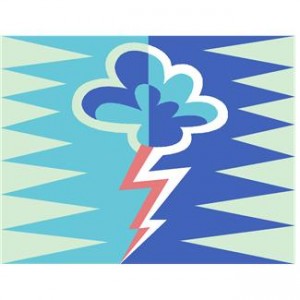Lightning strikes once
21 April 2012 – Cathy Stanton
Today’s “Lightning Talk” session was a great one-hour showcase for about a dozen digital projects:
- Larry Cebula: Spokane Historical, a web and mobile platform for telling stories of Spokane and Eastern Washington, developed by the Public History program at Eastern Washington University using Curatescape and Omeka
- Cathy Stanton: History@Work (hey, that’s us)
- Bobby Allen: University of North Carolina/Chapel Hill’s Digital Innovation Lab, an American-Studies-based project that is developing, testing, and documenting best-practice models for faculty and graduate student work in public humanities that integrates community engagement, digital technologies, and interdisciplinary inquiry
- Andrew Hurley: the Virtual City Project, which uses three-dimensional imaging technologies to create electronic representations of lost historic landscapes
- Trevor Owens: Viewshare, a free web application developed by the Library of Congress for curators and collections managers to create and customize unique, dynamic online views of images from their collections.
- David Trowbridge: Flat World Knowledge, part of the movement to make college textbooks more affordable by publishing open-source, customizable textbooks
- Jennifer Rosenfeld: Teachinghistory.org, a project of the Roy Rosenzweig Center for History and New Media designed to help K–12 history teachers access resources and materials to improve U.S. history education in the classroom
- Becky Bailey: Museums without Walls, a project developed at Northern Kentucky University that provides curriculum driven virtual field trips for P-12 teachers and their students
- Mark Tebeau: Cleveland Historical, a free mobile app developed by the Center for Public History + Digital Humanities at Cleveland State University
- Lee Wright: The History List,an online platform connecting individuals interested in history with history-related organizations and sites, events and exhibits in their communities and beyond
- The Ojibwe People’s Dictionary, an illustrated, talking dictionary created by the University of Minnesota Department of American Indian Studies
- The 1968 Exhibit, the web partner to a traveling exhibit organized by the Minnesota History Center in partnership with the Atlanta History Center, the Chicago History Museum and the Oakland Museum of California
There was time for a bit of discussion after the lightning talks, and a question about how to sustain websites over the long term sparked various answers. Mark Tebeau questioned whether we should actually worry about that–unusually for a historian, he noted that the web is an ephemeral medium, so maybe all the focus on building long-term websites is misplaced. Others suggested that long-term maintenance could and maybe should be at least partly the responsibility of whatever community was involved in the project as audience, participants, and/or content generator. This provoked some discussion in turn about shared authority and differing conceptions of history. Tebeau said that in his experience with the Cleveland History project, it’s not so much that the non-professionals cling to their own versions of history, but that they tend to try to assume the kind of distanced and objective voice that they think historians are supposed to use, and in the process take their own personalities and voices out of what they write for the Cleveland website.
The two presenters from University of Minnesota (and I apologize for not having written down their names) noted that the 2008 Minnesota Sales Tax Amendment, which raised the state sales tax by 3/8 of a percent, had funded the Ojibwe People’s Dictionary and many other cultural heritage projects. Much envy among us non-Minnesotans.




I was curious if you ever thought of changing the layout
of your site? Its very well written; I love what youve got to
say. But maybe you could a little more in the way of content so people could connect with it better.
Youve got an awful lot of text for only having
one or two images. Maybe you could space it out
better?
My brother suggested I would possibly like this blog. He was totally right.
This submit actually made my day. You cann’t consider just how much time I had spent for this information! Thanks!